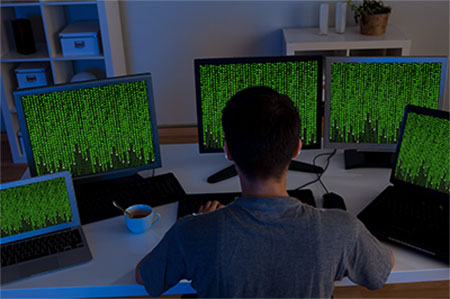If you haven’t heard already, October is National Cyber Security Awareness Month and things have already gotten off to a good start on social media, especially Twitter (#NCSAM). It’s important to realize that many of us are very much “aware” of cyber security issues on a global basis, so I think it’s time to focus on the fact that cyber security is everyone’s job. 
We all have a way of taking care of ourselves – hygiene – some are better at it than others, but we all have a standard for defining proper hygiene for ourselves. At a basic level, we know to cover our mouth when we cough or sneeze out of respect for those around us to minimize the spread of germs. So, why then, do we allow cyber “germs” to spread? If we have an infected device, then it is possible that it will infect other devices; thus, the spread of infectious germs begins in the cyber community.
Just as the germs that make up a cold prey on vulnerable individuals, cyber criminals seek out vulnerable devices to infect. This infection, in the form of bots or zombie networks, for example, can quickly reach millions of users. (Ever seen the movie Contagion? This is a great example of how disease spreads and can easily be translated into the cyber world.)
And, don’t forget about social networking and email. If your accounts are not secure, you open up the door for malicious individuals to pretend they are you in online situations. Before you know it, your name could be associated with a social engineering attack that stole millions of dollars from a bank, when in actuality, you are innocent.
As individuals, we all share in the responsibility of cyber security, from a child that is just getting their parent’s permission to use the Internet all the way up to the elderly, who for some, are just learning about the Internet, cyber security, etc. Education is the key differentiator to getting people on board to not only learn about all the cyber security issues, but how each person can do their part to help.
Throughout this month, the theme is “Stop. Think. Connect.” as a way to take precautions, understand the consequences of your actions and behaviors, and enjoy the many benefits the Internet has to offer.
Stop: Understand the risks and learn how to spot potential problems before using the Internet.
Think: Be certain your online path is clear by watching for warning signs. Also, consider how your online actions could impact your safety and those most important to you.
Connect: Be confident online. If you have taken all the precautions to safeguard yourself and others, sit back and enjoy your time spent exploring the Internet.